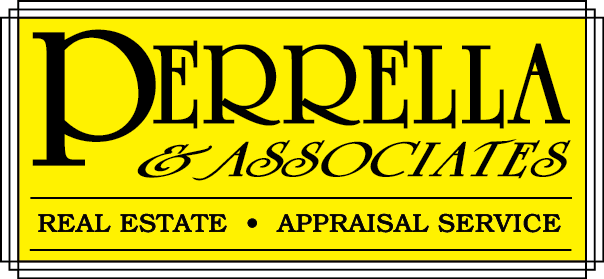Illuminate Listings Without Breaking the Bank
Help sellers put their homes in the best light before you put them on the market. New lighting industry innovations can help play up the hard work put into getting a house ready for sale, show how rooms are meant to function, and pass along energy-efficient savings to buyers.The proper illumination can shine a crisp spotlight, spread a wide beam, or cast a warm glow on a home’s best features to make a listing more appealing to buyers. Thankfully, most sellers don’t need to hire an electrician, install recessed cans, or purchase expensive fixtures in order to gain the benefits of this type of staging.Updated lighting not only helps your listing stand out visually but also attracts buyers eager to save energy and electricity costs. Here are a few ways you and your clients can take advantage of the latest developments in the lighting industry.
Add layers to enhance room function and mood. When evaluating an area’s lighting needs, make sure there are three layers of light. Ambient light creates a backdrop and should provide overall brightness without glare. Ensure there’s adequate task lighting to help homeowners perform typical functions for whatever space they’re in (under-cabinet lights to safely prep food in a kitchen, night lights for reading comfortably in bed, or a desk lamp for paperwork in an office). Accent lighting can draw attention to some appealing features, such as a striking kitchen island, large painting, or even a lovely mature tree in the backyard.
Increase energy efficiency. Many buyers are looking for energy savings in a home, and LED bulbs will greatly reduce heat output and conserve energy. Pam Price, head of retail marketing at LEDVANCE, which manufactures the Sylvania bulb brand, pegs the energy reduction for LEDs at 85 percent less than incandescent bulbs. Some sellers may be reluctant because they think LED light is too cool or the bulbs are expensive and nonfunctional with dimmers—all of which was once true, but has changed since the first generation debuted. In addition to the initial cost saving, LED bulbs typically last 25 times longer than incandescent bulbs, which are being phased out due to more stringent government energy requirements. Consumers can find each bulb’s life expectancy, generally in hours, on the package. Sellers should also find out if their local utility company offers rebates if they purchase such LED bulbs, says Joseph A. Rey-Barreau, an architect and a lighting consultant for the American Lighting Association.
Explore DIY options. Not only have these new lighting options come down in price over the years, LED options are also often much easier to install, even in some cases by DIYers. Under kitchen cabinets, sellers can easily attach modular strips with adhesive for much-needed task lighting. Rey-Barreau says a 24-inch strip will cost between $30 and $50 and is much easier for a DIYer than the old sockets that had to drilled into the base of cabinets.
Enhance safety. Smart lighting choices can also help alleviate buyers’ concerns about safety. Programmable systems can turn lights on and off in a room or entire house to avoid a vacant home look. Once pricey and complicated to install because they had to be hardwired, new options are wireless and less time-consuming and costly to install. They’re also more user-friendly to operate and can be controlled from smart devices and security systems, says Nancy Goldstein, a principal with Light Positive, a lighting design resource in Marblehead, Mass.
Play up the outdoors. Landscape lighting can also enhance safety while helping to highlight textures and plants outdoors, says Rey-Barreau. It brings the outdoors in to expand a home’s sense of space. “It minimizes the confining ‘black mirror’ effect that large areas of glass can produce when there’s no view beyond the panes at night,” says Goldstein. Costs here have also come down thanks to starter kits with four to eight lights available for $100 to $200, says Joe Dugandzic, executive producer and editorial director of Smarter Home Life, a website and YouTube channel about home automation and lighting.
Choose the right bulb and fixture. Too many sellers still buy bulbs on sale or don’t pair the right bulb with the right fixture for the desired need, says Dugandzic. For example, he suggests using an uplight-style lamp to illuminate a dark corner. Homeowners should consider light output or brightness (measured in lumens, rather than watts) and the color temperature, from warm white to cool blue (measured in Kelvins). Thanks to Federal Trade Commission requirements, manufacturers must now label packages with a “Lighting Facts” box that details this information as well as the bulb’s life expectancy, energy use, and estimated annual costs.Experts differ on specifics but here are a few tips from John Hales, owner of Mr. Electric of Greater Augusta, a Georgia company specializing in electrical installation and repair services, about what should be used where:
• Living room. Mixed lighting should reflect the many ways this room can be used. Try adjustable lamps paired with three-way LED bulbs from 1,500 to 3,000 lumens and 2,200–3,000K in the color temperature range.
• Dining room. Dimmable fixtures paired with dimmable LEDs allow for brightness. Make sure clients know different LED bulbs require different dimmers and are not interchangeable.
• Kitchen. Because of the different functions of this versatile room, good ranges are from 4,000 to 8,000 lumens and 2,700–5,000K.
• Bedroom. To preserve circadian rhythms, go for 1,500 to 4,000 lumens.
• Home office. Cool white lights in the 3,000 to 6,000 lumens.
Introduce sizzle. Lighting has a sexy side that can help differentiate listings in an affordable way. The newest bulbs render color more accurately than in years past. Some bulbs can change color to cast different moods. LED bulbs are also showing up in new, unexpected places such as illuminated showerheads, says Rey-Barreau. And some manufacturers are adding a hip factor by offering connectivity using Bluetooth, allowing homeowners to control lighting from the same devices that they use to control temperature, locks, garage doors, and other accessories.
This is some great information to help homeowners that are preparing their homes for sale. It’s a good way to set the mood when a buyer enters the home when they are searching for their forever home.
I hope everyone is out enjoying their weekend!!!


